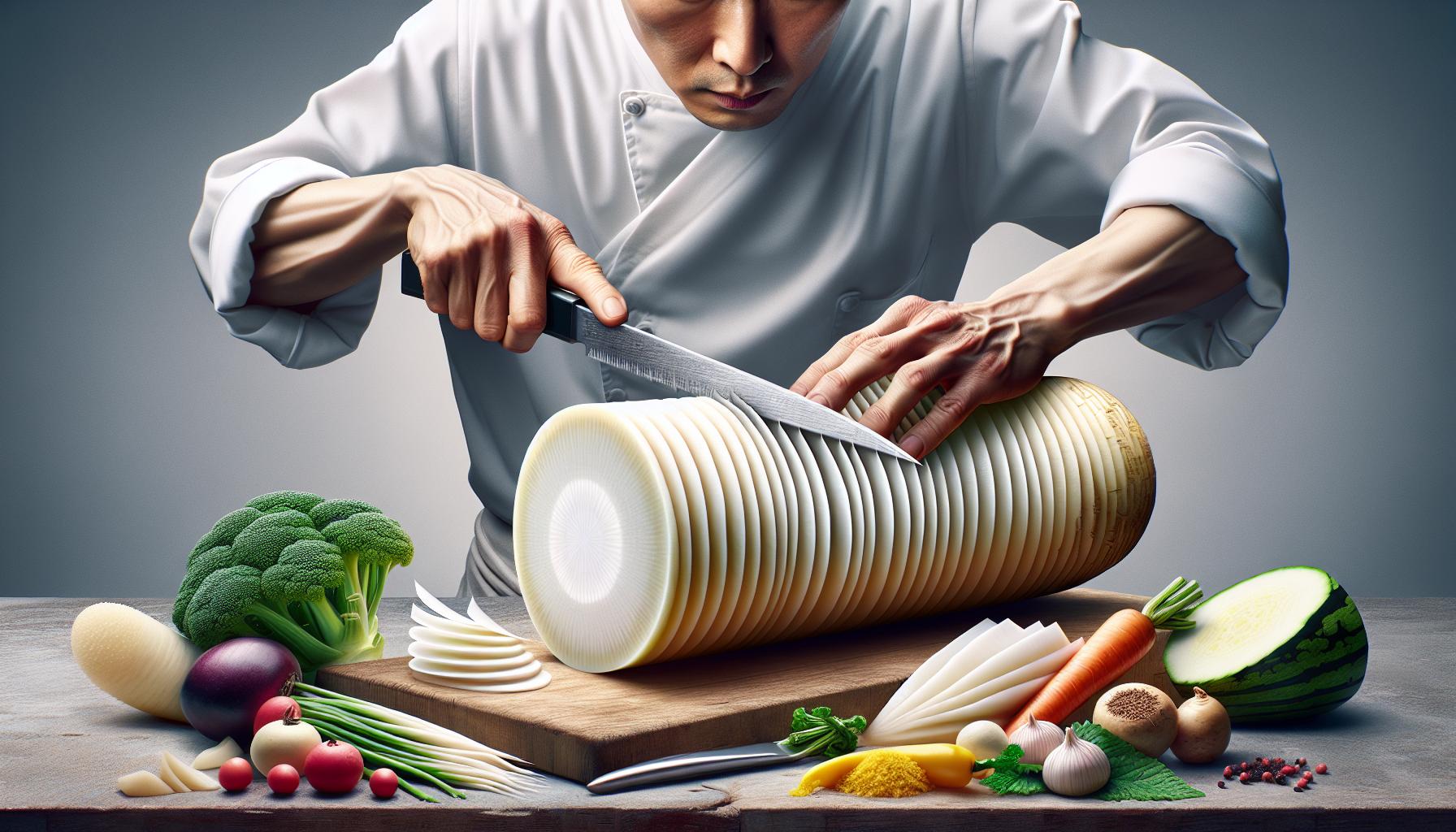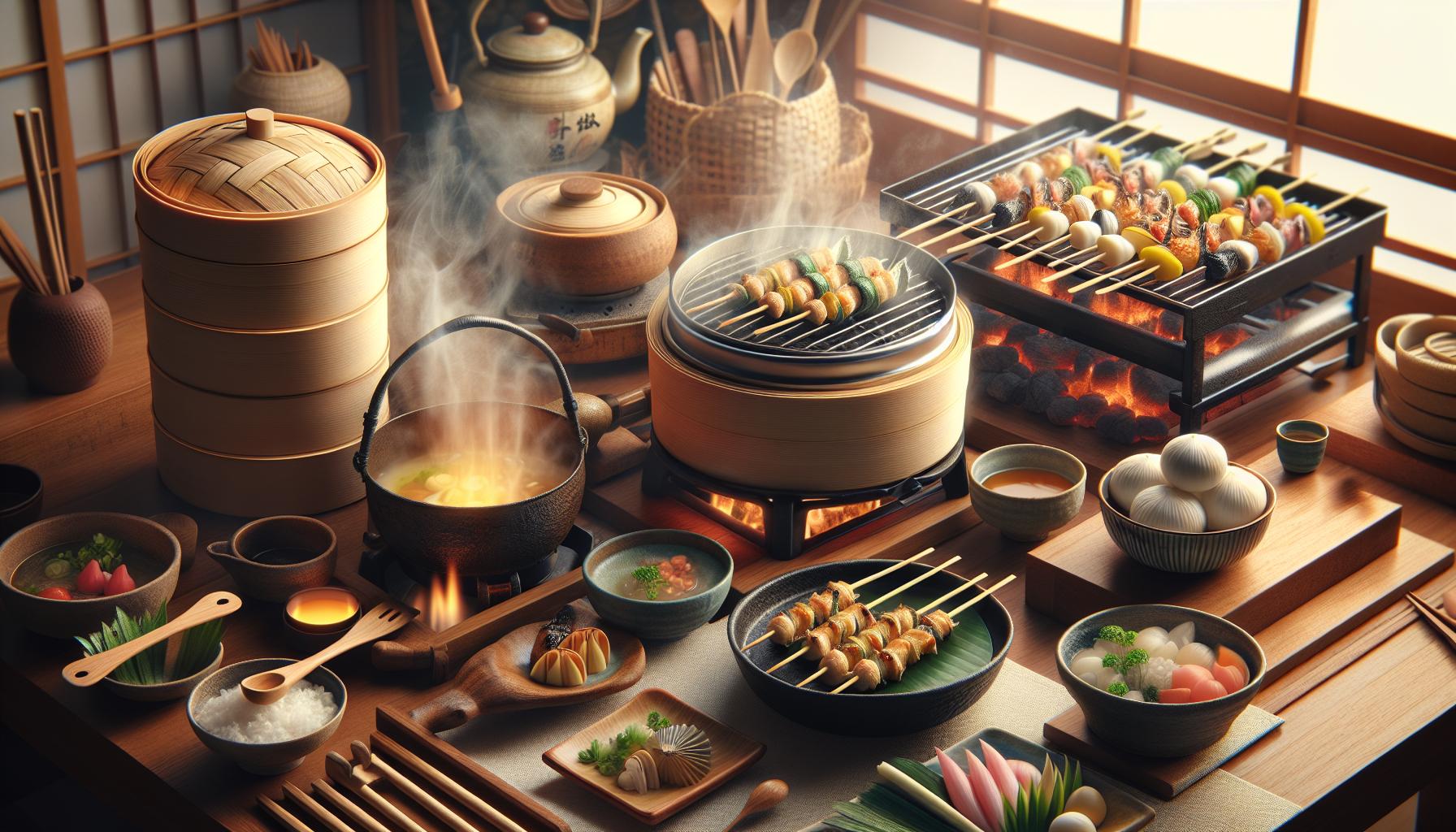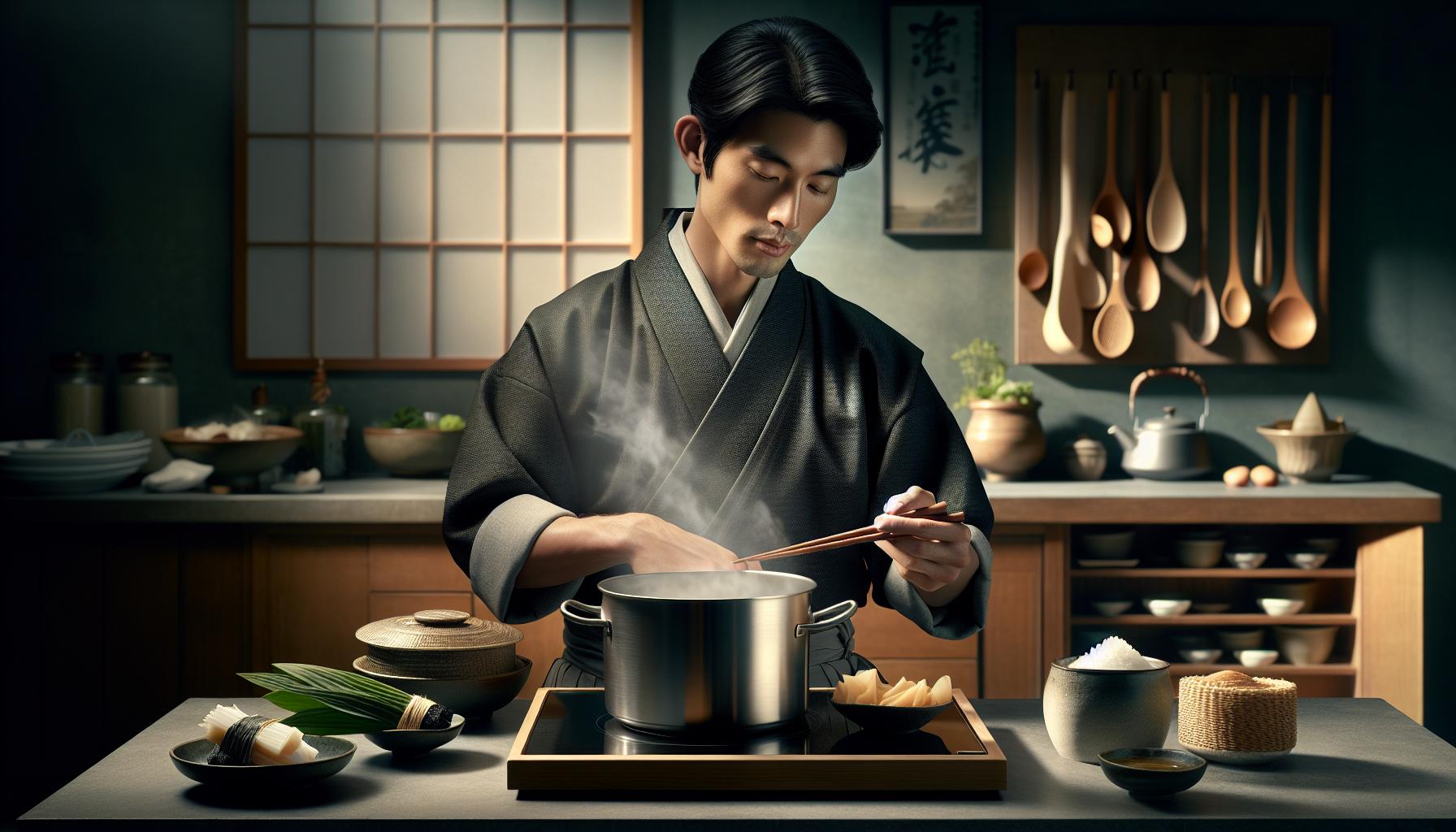Japanese Cooking Techniques has captivated food lovers worldwide with its meticulous preparation methods and emphasis on precision. From the art of perfectly slicing sashimi to the careful balance of umami flavors these time-honored techniques transform simple ingredients into culinary masterpieces.
Beyond sushi-rolling and miso-making Japanese cooking embraces unique methods like yakitori (skewer grilling) and tempura (light battering and frying). These techniques aren’t just about preparing food – they’re about creating harmony between ingredients presentation and taste. It’s where tradition meets innovation and where every slice chop and simmer tells a story of Japan’s rich culinary heritage.
Japanese Cooking Techniques
Japanese cooking relies on specialized equipment that enables precise preparation techniques. Traditional tools enhance the authenticity of Japanese dishes while promoting efficient cooking methods.
Traditional Knives and Cutting Boards
Japanese knives feature distinct designs for specific cutting tasks. The Yanagiba, a single-beveled knife, creates precise cuts for sashimi. The Deba excels at breaking down whole fish, while the Nakiri specializes in vegetable preparation. These knives pair with Hinoki cutting boards, made from Japanese cypress, which offers natural antibacterial properties and prevents dulling blade edges.
Key Japanese knife types:
- Santoku: Multi-purpose knife for vegetables, fish & meat
- Usuba: Professional vegetable knife with thin blade
- Honesuki: Boning knife for poultry & meat
- Kiritsuke: Chef knife for slicing & chopping
Key Cooking Vessels and Utensils
Traditional Japanese Cooking Techniques incorporate specific cookware for authentic results. The donabe clay pot distributes heat evenly for hot pots & rice dishes. The rectangular tamagoyaki pan creates perfectly layered Japanese omelets.
- Suribachi & Surikogi: Mortar & pestle for grinding sesame seeds
- Otoshibuta: Drop lid for simmered dishes
- Makisu: Bamboo mat for rolling sushi
- Oroshigane: Metal grater for wasabi & daikon
- Yakitori grill: Charcoal grill for skewered meats
Foundational Japanese Cutting Techniques

Japanese Cooking Techniques knife skills form the cornerstone of traditional cooking, emphasizing precision cuts that enhance both presentation and texture. These techniques transform vegetables and proteins into uniform pieces that cook evenly and create visually stunning dishes.
The Art of Katsuramuki
Katsuramuki represents the Japanese Cooking Techniques of creating a continuous thin sheet from cylindrical vegetables like daikon or cucumber. This rotary peeling method produces translucent sheets measuring 0.5mm in thickness, ideal for garnishes and wraps. Japanese chefs execute katsuramuki by positioning the knife at a 30-degree angle against the vegetable while rotating it away from the blade. The resulting sheets enhance dishes like sunomono salads with their delicate appearance and crisp texture. Professional chefs practice this technique for 3-5 years to achieve mastery, demonstrating the dedication required in Japanese cuisine.
Mastering Julienne and Diagonal Cuts
Japanese julienne cuts create precise matchstick-sized pieces called usugiri for vegetables like carrots, cucumbers and daikon. The standard measurements for these cuts include 3mm x 3mm x 4cm for fine julienne and 4mm x 4mm x 6cm for standard julienne. Diagonal cuts, known as nanamegiri, produce slices at 45-degree angles to maximize surface area for cooking. These angled cuts feature prominently in stir-fries and clear soups, creating 5mm-thick pieces that maintain their shape while cooking. Professional kitchens employ specific cutting templates called kendai to ensure consistency across all ingredients.
Traditional Japanese Cooking Methods

Traditional Japanese cooking encompasses distinct preparation techniques that preserve ingredients’ natural flavors while achieving optimal texture. Each method serves a specific purpose in Japanese cuisine, reflecting centuries-old culinary wisdom.
Nimono (Simmered Dishes)
Nimono represents the art of simmering ingredients in dashi-based cooking liquid. The technique uses a combination of soy sauce, mirin, sake, sugar, and dashi stock to create flavorful dishes. Ingredients simmer at low temperatures in a drop-lid cooking vessel called an otoshibuta, allowing even heat distribution. Popular nimono dishes include kabocha no nimono (simmered pumpkin), nishime (simmered vegetables), and buri daikon (simmered yellowtail with daikon radish). The cooking liquid reduces to create a glossy coating on ingredients while maintaining their structural integrity.
Yakimono (Grilled and Pan-Fried)
Yakimono includes grilling and pan-frying methods that create distinct charred flavors and crispy textures. The technique employs direct heat sources like charcoal grills (konro) or flat griddles (teppan). Common yakimono preparations include yakitori (grilled chicken skewers), teriyaki (grilled items with sweet soy glaze), and shioyaki (salt-grilled fish). Chefs control heat intensity and timing to achieve perfect caramelization while retaining moisture. Temperature management prevents burning while ensuring thorough cooking of proteins and vegetables.
Mushimono (Steamed Dishes)
Mushimono centers on steaming ingredients to preserve nutrients and enhance natural flavors. This technique utilizes specialized steamers called seiro made from bamboo or metal. Chefs prepare classic dishes like chawanmushi (savory egg custard), sakamushi (sake-steamed fish), and shumai (steamed dumplings). The steaming process maintains ingredient integrity while creating tender textures. Correct timing and temperature control prevent overcooking delicate items like seafood and eggs. The method produces pure, clean flavors without added fats or oils.
Stock-Making and Soup Techniques

Japanese soups rely on precise stock-making techniques that extract maximum flavor from minimal ingredients. The foundation of these techniques lies in creating clear, umami-rich broths that form the base of numerous traditional dishes.
Creating Perfect Dashi
Dashi forms the cornerstone of Japanese Cooking Techniques cuisine through a careful combination of kombu (dried kelp) and katsuobushi (dried bonito flakes). The process starts with cold-steeping kombu in fresh water for 30 minutes at room temperature to extract its natural glutamates. The water temperature rises gradually to 140°F (60°C) before removing the kombu to prevent bitterness. Adding katsuobushi and steeping for 60 seconds produces primary dashi (ichiban dashi). Secondary dashi (niban dashi) emerges from re-steeping the same ingredients with fresh water, creating a lighter stock for everyday cooking. Professional chefs measure precise quantities:
| Ingredient | Primary Dashi | Secondary Dashi |
|---|---|---|
| Water | 1000ml | 1000ml |
| Kombu | 20g | Used kombu |
| Katsuobushi | 30g | Used katsuobushi |
| Steeping Time | 60 seconds | 90 seconds |
Clear Soup Preparation
Clear soups (suimono) demonstrate the pinnacle of Japanese stock craftsmanship through their crystal-clear appearance. The preparation involves careful skimming of impurities during the heating process using specific circular motions. Straining occurs through multiple layers of fine-mesh sieves lined with dampened cheesecloth. Temperature control remains critical:
| Stage | Temperature | Duration |
|---|---|---|
| Initial Heat | 175°F (80°C) | 10 minutes |
| Simmer | 185°F (85°C) | 20 minutes |
| Final Heat | 195°F (90°C) | 5 minutes |
These soups incorporate garnishes like mitsuba leaves, yuzu zest or delicate seafood pieces, added just before serving to maintain their texture.
Rice Cooking and Presentation
Perfect rice forms the foundation of Japanese cuisine, requiring specific techniques to achieve its characteristic glossy appearance and sticky texture. The preparation process involves multiple steps that influence the final quality of the cooked rice.
Proper Rice Washing Methods
Japanese rice washing begins with a precise measurement of 2 cups of rice in a large bowl. The initial rinse removes surface starch through gentle circular motions using fingertips. A specific technique called te-mata involves creating a cross pattern with the hands while washing, ensuring thorough cleaning without breaking the grains. The process requires 3-4 washing cycles until the water runs clear, with each cycle using cold water at 45-55°F (7-13°C). Between cycles, draining occurs at a 45-degree angle to maintain grain integrity. The final step involves a 30-minute soaking period that allows the rice to absorb moisture evenly.
Achieving Ideal Texture and Consistency
The rice-to-water ratio plays a crucial role in achieving perfect texture: 1 cup of rice requires 1.1 cups of water for standard Japanese rice. The cooking process starts with high heat for 5 minutes, followed by 10 minutes on medium-low heat. A 10-minute resting period allows the rice to steam properly. The finished product exhibits distinct characteristics: individual grains remain intact yet stick together when pressed. Professional chefs use a rice paddle called a shamoji, cutting at 45-degree angles to prevent crushing. The cooked rice maintains a temperature of 140°F (60°C) for optimal serving conditions.
Essential Seasoning and Flavor Balance
Japanese cuisine achieves its distinctive taste through precise seasoning techniques and careful flavor orchestration. The harmonious balance of ingredients creates depth while maintaining the natural essence of each component.
The Five Basic Tastes
Japanese cooking incorporates all five basic tastes: umami (savory), salty, sweet, sour bitter. Umami comes from dashi stock ingredients like kombu kelp katsuobushi bonito flakes. Salt derives from essential condiments including soy sauce shoyu miso fermented soybean paste. Sweet elements emerge through mirin rice wine sake natural sugars in vegetables. Sour notes appear in rice vinegar ponzu citrus-based sauce yuzu fruit. Bitter components manifest in foods such as green tea wasabi Japanese mountain vegetables.
| Basic Taste | Key Sources |
|---|---|
| Umami | Dashi, kombu, katsuobushi |
| Salty | Shoyu, miso, sea salt |
| Sweet | Mirin, sake, root vegetables |
| Sour | Rice vinegar, ponzu, yuzu |
| Bitter | Green tea, wasabi, mountain vegetables |
Seasonal Ingredient Selection
Seasonal ingredients (shun) form the cornerstone of Japanese Cooking Techniques flavor composition. Spring brings tender bamboo shoots sakura cherry blossoms fresh sea vegetables. Summer features eggplants cucumbers watermelons. Autumn introduces matsutake mushrooms chestnuts persimmons. Winter highlights daikon radish nabe hot pot ingredients citrus fruits. Each season’s ingredients possess peak flavor profiles that complement specific cooking techniques. Chefs select produce based on its natural sugar content texture ripeness to achieve optimal taste results.
Japanese cooking techniques represent a perfect blend of artistry tradition and precision. From masterful knife skills to the delicate balance of flavors each element plays a crucial role in creating authentic Japanese dishes. These time-honored methods continue to influence modern culinary practices worldwide inspiring both professional chefs and home cooks.
The dedication to perfecting these techniques reflects Japanese cuisine’s core philosophy where every detail matters. By understanding and applying these fundamental methods anyone can begin their journey toward creating authentic Japanese dishes that honor this rich culinary heritage.



